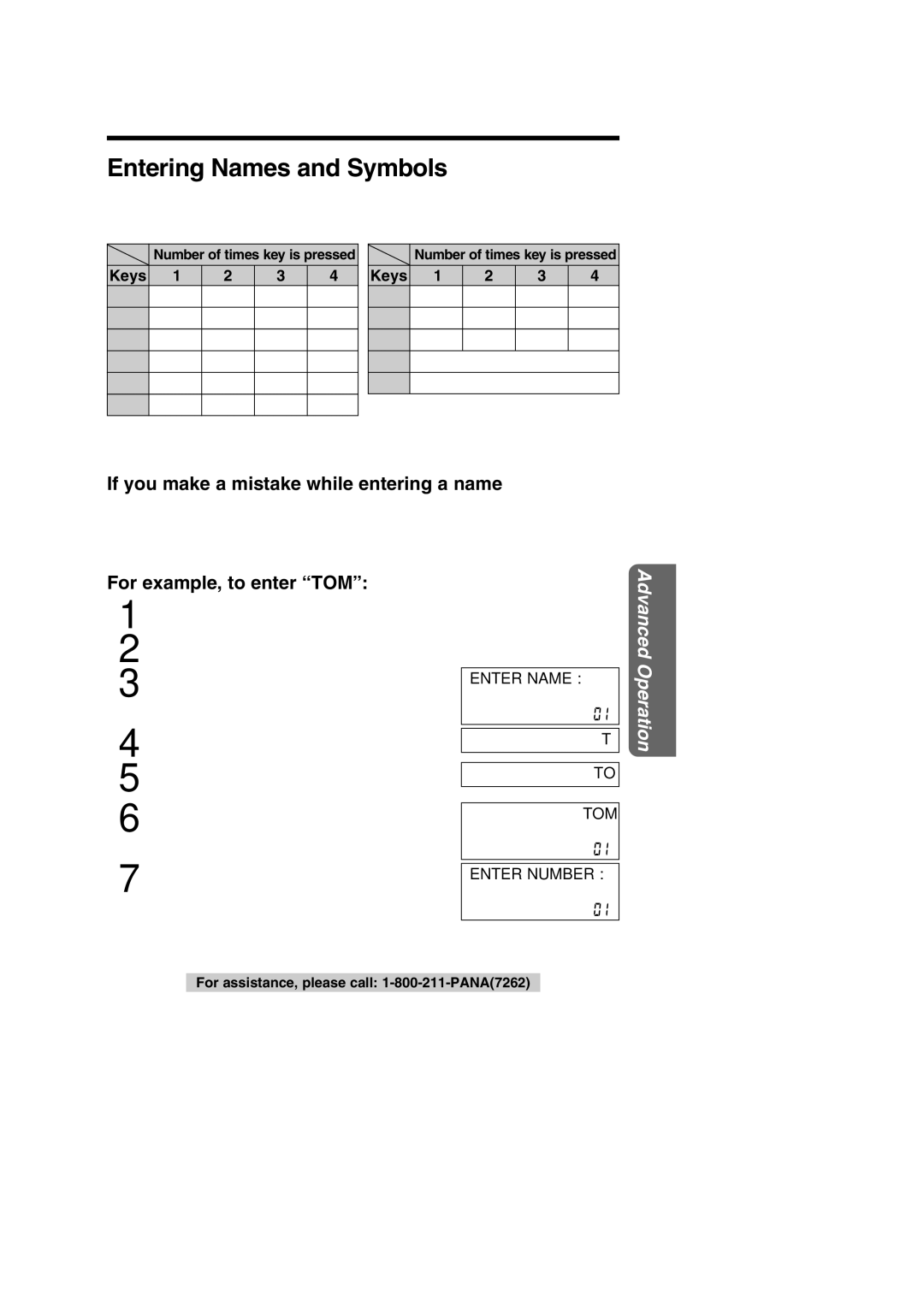KX-TC1484F specifications
The Panasonic KX-TC1484F is a versatile cordless phone that combines modern technology with user-friendly features, making it an excellent choice for both home and office use. Its sleek design and practical functionality place it among the more popular options in the cordless phone segment.One of the standout features of the KX-TC1484F is its impressive range. With a robust transmission system, this phone can operate effectively up to 1,000 feet away from its base unit, allowing users to move freely around their homes or offices without losing signal clarity. This impressive range is paired with a digital answering system that can store up to 18 minutes of messages. Users can easily manage messages with controls located directly on the handset.
The KX-TC1484F also boasts a long battery life. The battery can provide extended talk time, making it convenient for long conversations. When the battery does require recharging, the phone is designed to return to the base unit easily and is always ready for your next call.
Another highlight of this model is its ergonomic design. The handset is lightweight and easy to hold during long conversations, complemented by a comfortable grip and intuitively placed buttons. The backlit LCD display ensures that users can read the information clearly, even in low-light conditions.
This phone supports a Caller ID feature, displaying the caller's information before the call is answered. This capability helps users manage incoming calls more effectively. Additionally, the KX-TC1484F includes a built-in phonebook that accommodates up to 50 entries, enabling users to quickly dial frequently contacted numbers with ease.
The KX-TC1484F is also equipped with a range of ringtones, allowing users to personalize their phone calls to fit their style. Furthermore, the interference-free operation of the phone ensures that conversations remain private and clear, thanks to its advanced digital technology.
In summary, the Panasonic KX-TC1484F combines style, functionality, and user-friendly technology. Its extensive range, high-quality voice clarity, and practical features make it a desirable choice in the cordless phone market, suitable for anyone seeking reliability and convenience in their communication devices.

